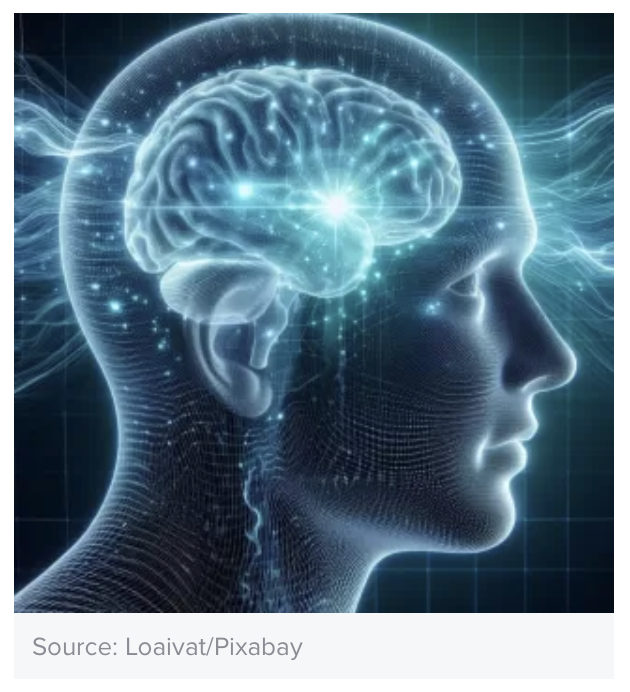Release time: 2025-04-11 12:13
AI and BCI Transform Thoughts to Speech in Near Real-Time
Breakthrough brain-computer interface uses AI to help stroke survivor speak.
 A major neuroscience milestone has been achieved that may one day help patients with paralysis, neurological disorders, brain, and spinal cord injuries, and more. A new peer-reviewed study at the intersect of artificial intelligence (AI) and brain-computer interfaces (BCIs) was unveiled in the journal Nature Neuroscience by researchers at the University of California, Berkeley and the University of California, San Francisco (UCSF). A team of scientists enabled a severely paralyzed woman named Ann to speak more naturally using her thoughts using an AI-powered BCI solution that translates her brain activity into synthesized speech at nearly real-time speed.
A major neuroscience milestone has been achieved that may one day help patients with paralysis, neurological disorders, brain, and spinal cord injuries, and more. A new peer-reviewed study at the intersect of artificial intelligence (AI) and brain-computer interfaces (BCIs) was unveiled in the journal Nature Neuroscience by researchers at the University of California, Berkeley and the University of California, San Francisco (UCSF). A team of scientists enabled a severely paralyzed woman named Ann to speak more naturally using her thoughts using an AI-powered BCI solution that translates her brain activity into synthesized speech at nearly real-time speed.
“Our findings introduce a speech-neuroprosthetic paradigm to restore naturalistic spoken communication to people with paralysis,” wrote corresponding authors UCSF professor and neurosurgeon Edward Chang and UC Berkeley professor Gopala Anumanchipalli.
The participant is a female brain stem stroke survivor who had spastic quadriparesis (also known as tetraparesis) and anarthria, according to the study’s reporting summary. A stroke occurs when the brain’s blood vessel is ruptured, or the blood supply is blocked. Prior to her stroke in 2005, Ann taught mathematics at a Canadian high school, according to a UCSF release.
Quadriparesis is muscle weakness in both arms and both legs, which can limit movement and mobility. Quadriparesis and quadriplegia (also known as tetraplegia) are conditions that affect both arms and both legs. The main difference is that quadriplegia is full paralysis, with no ability at all to feel sensations nor move both arms and both legs. Anarthria is a condition caused by severe motor speech impairment that results in the complete loss of the ability to articulate speech, according to the second edition of The Neurology of Consciousness.
Located at the base of the human brain, the brainstem connects the spinal cord to the brain, and its cylindrical shape somewhat resembles a plant stalk. Its neuroanatomy consists of three parts: the medulla oblongata, pons, and midbrain. Located at the bottom of the brain stem, the medulla oblongata helps transmit signals from the spinal cord to the brain to regulate vital activities such as breathing, swallowing, blood pressure, cardiac rhythm, heart rate, breathing, balance, coughing, sneezing, vomiting, and other functions. Pons means “bridge” in Latin; 16th-century Italian neuroanatomist Costanzo Varolio noted that its shape resembling a bridge on the Venice Canal. The pons bridges the medulla oblongata and the midbrain. It contains numerous nerves that serve as an important link between the left and right brain, as well as the cerebellum to the cerebrum, and it has a role in the regulation of sensory inputs, taste, salivation, facial expressions and sensations, balance, eyeball movements, breathing, and other activities. The primary role of the midbrain, found between the cerebral cortices and hindbrain, sits at the top of the brain stem and plays a role in temperature control, vision, hearing, arousal state, and motor functions. The midbrain relays nerve impulses for motor and sensory functions between the cerebral cortex and thalamus, as well as the spinal cord and pons.
Ann was also a study participant in the team’s prior brain-computer interface study that was published in 2023, according to a UC Berkeley release. Ann was 47 at the start of the enrollment of the clinical trial in which an electrocorticography (ECoG) recording device with 253 electrodes was implanted in her brain as a neural interface to capture brain activity. The brain-computer interface solution consisted of PMT Subdural Cortical Electrodes combined with Blackrock NeuroPort Array and NeuroPort System, according to the clinical trial data from ECoG BMI for Motor and Speech Control (BRAVO).
For the new study, the team used recordings of Ann’s brain activity data from the speech sensorimotor cortex. The researchers created AI deep learning recurrent neural network models to decode the streaming brain activity. The team discovered that not only could their solution stream intelligible speech within a second, but also it works with both invasive microelectrode arrays (MEAs) and non-invasive recordings (sEMG) facial sensors, according to UC Berkeley.
Other researchers who participated in this landmark neuroscience study include Karunesh Ganguly, Kaylo Littlejohn, Cheol Jun Cho, Jessie Liu, Alexander Silva, Bohan Yu, Vanessa R. Anderson, Cady Kurtz-Miott, Samantha Brosler, Anshul Kashyap, Irina Hallinan, Adit Shah, Adelyn Tu-Chan, and David Moses.

Cami Rosso writes about science, technology, innovation, and leadership.
Psychology today